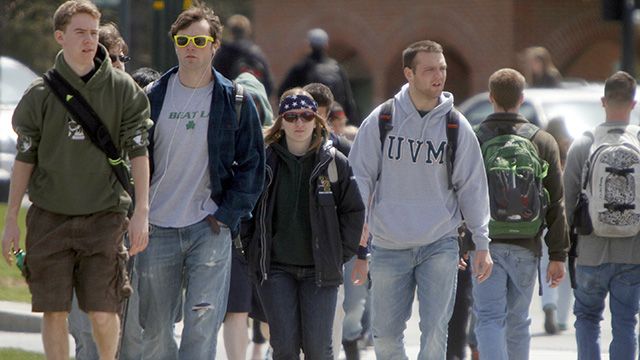
This post originally appeared at ThinkProgress.
The rise in college costs over recent years is not being distributed equally and students from the poorest families are bearing more of the burden than those from wealthier families, according to a new analysis of federal education cost data from the Hechinger Report.
The group measured the distribution of cost increases by looking at the net price of a year of school after financial aid is factored in. Colleges and universities report the total cost of a year of tuition, room and board, books, fees and other expenses and subtract scholarships and grants. Hechinger looked at how net price figures changed from the 2008-09 school year to the 2011-12 year and found rising costs across the board. Public school net prices rose by $1,100 on average, compared to a $1,500 average jump at private colleges and universities.
But students from families with less than $30,000 in annual income had to absorb a $1,700 increase in net price for a year of private college, according to Hechinger, while those with the highest family incomes saw just a $1,200 increase. All the report’s figures are adjusted for inflation.
State education funding cuts due to the recession have compounded the cost shift for poor families whose kids hope to attend public state schools, with the net price of a year at Arizona State University rising nearly twice as fast for poor kids as for rich ones. In some specific cases, the richest families even saw their costs fall. At Alabama State, the net price rose by $3,800 for families with less than $30,000 in income, but fell by $700 for families who earned more than $75,000 per year.
As Hechinger explains, shifting costs onto poor students means shifting them onto the public. “Because more low-income students also receive federal Pell Grants, this difference suggests that colleges are leaving it to taxpayers to subsidize the people at the bottom, while they use their own financial aid to court families higher up the income ladder,” the group writes. On top of that, tax breaks for college tuition go primarily to rich families.
The new data reflects a long-running shift in how schools allocate financial aid money. As public funding for college has been cut and the cost of running a school has risen, schools have spent more money and energy wooing the most qualified applicants. That’s shifted the overall financial aid world away from scholarships based on financial need and toward doling out aid based on grades, test scores and other measures of academic merit. In 1995, just a quarter of private college students received merit-based aid. By 2010, that figure had jumped to 44 percent. The numbers are smaller at public schools, but the trend is the same.
That transition from need-based to merit-based aid leaves less money for poorer students, which leads Hechinger’s analysts to accuse the higher education world of “quietly shifting the burden of their big tuition increases onto low-income students.” Some schools disputed that charge, saying that the federal data the group used does not account for both parents’ incomes in cases of divorce and that the collapse in housing prices left higher-income families with a greater need for assistance than their tax bracket would suggest.
Still, those wealthier families are better able to pick up the leftover tab after financial aid is factored in. Shifting costs onto the poor means exacerbating the country’s massive student debt problem. With more than a trillion dollars in outstanding student loans, under-enrollment in programs meant to ease loan repayment and historically high default rates, higher education is proving to be more of an economic drag than a boon for millions of young people. Those debts keep young people from buying things and that lost spending hurts economic growth. The money college debtors spent on loan payments last year alone could have bought 155,000 new houses or 67 million new iPhones.


